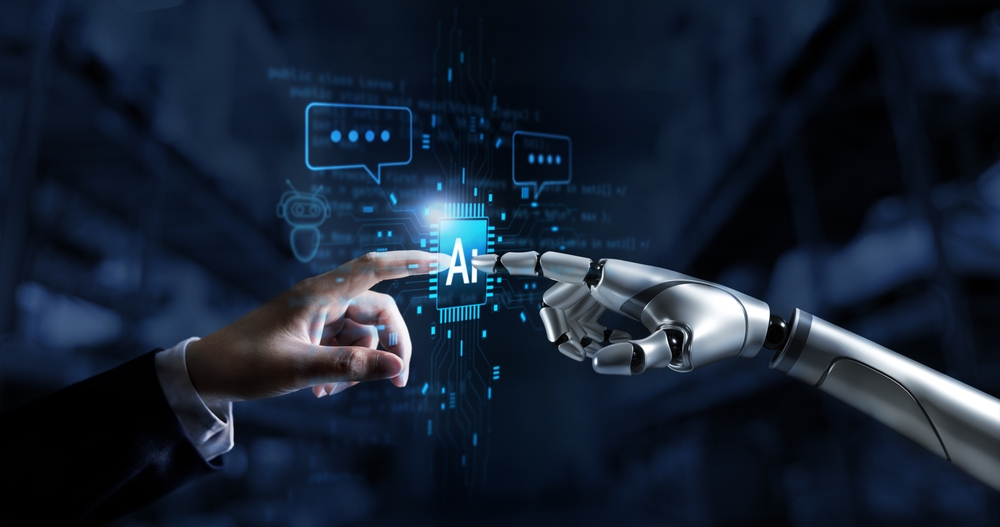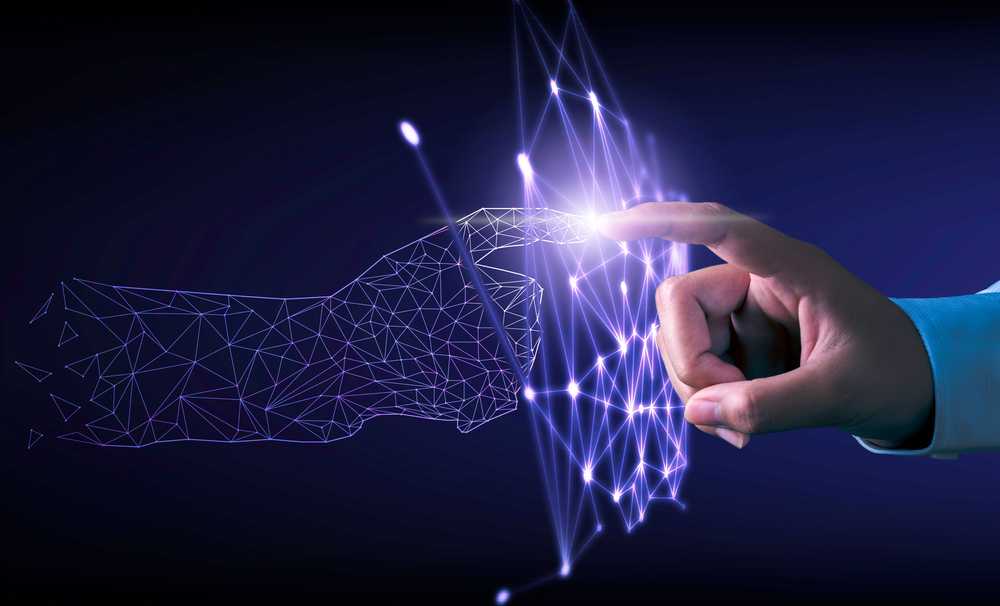
The AI Revolution: How Artificial Intelligence is Shaping the Future of Business
Artificial Intelligence (AI) is no longer a futuristic concept—it’s a transformative force shaping the modern business landscape. Across industries, AI is redefining how companies operate, innovate, and engage with customers.
From automating workflows and optimizing decision-making to personalizing user experiences and predicting market trends, AI is revolutionizing industries at an unprecedented pace. Companies that integrate AI aren’t just improving efficiency—they’re gaining a strategic advantage in a highly competitive, data-driven world.
But AI’s power isn’t reserved for large corporations alone. Entrepreneurs, small business owners, and professionals in every sector can leverage AI-driven tools to enhance creativity, streamline processes, and scale their operations like never before.
AI’s Business Impact: From Startups to Global Enterprises
- Marketing teams use AI to analyze consumer behavior, create content, and optimize ad campaigns.
- Retailers enhance customer engagement with AI-powered recommendation engines and dynamic pricing models.
- Healthcare providers leverage AI for early disease detection, AI-assisted surgeries, and medical diagnostics.
- Financial institutions use AI for fraud detection, automated risk assessment, and algorithmic trading.
And this is just the beginning. As Generative AI, Virtual Reality (VR), and predictive analytics continue to evolve, businesses that fail to adapt to AI-driven advancements may struggle to survive.
But how did AI get to where it is today? More importantly, how can YOU leverage AI to future-proof your career or business?
Let’s dive into AI’s evolution, capabilities, and practical applications so you can stay ahead of the revolution.
1. A Brief History of AI: From Myth to Machine Learning
Did you know that the idea of AI has existed for thousands of years? The concept of artificial intelligence is not a recent phenomenon—it has fascinated human minds for centuries. The desire to create intelligent machines that mimic human capabilities can be traced back to ancient civilizations, where myths and legends envisioned mechanical beings with human-like abilities.
The Ancient Foundations: The Dream of Intelligent Machines
- Greek Mythology and Early Automata – The ancient Greeks told stories of Talos, a giant bronze automaton built by the god Hephaestus to protect the island of Crete. Similarly, Pygmalion’s statue, which came to life, reflected the dream of artificial beings with human traits.
- Early Mechanical Devices – Throughout history, engineers and inventors have tried to create machines that mimic human movement and intelligence. The Chinese South-Pointing Chariot (3rd century AD) and Al-Jazari’s programmable humanoid robots (13th century) were early attempts at automation.
The Renaissance to the Industrial Revolution: The Seeds of AI
- Leonardo da Vinci (1495) – Da Vinci’s sketches included designs for a mechanical knight, an early representation of a humanoid robot. His work demonstrated the idea that machines could replicate human actions.
- Charles Babbage & Ada Lovelace (1830s-1840s) – Often considered the father of the modern computer, Babbage designed the Analytical Engine, which Lovelace later theorized could follow programmed instructions—an early vision of software and AI concepts.
The Birth of Modern AI: Mathematics Meets Computing
AI as we know it today began in the 20th century, when mathematics, logic, and computational power converged.
- Alan Turing & The Foundations of AI (1950s) – Mathematician Alan Turing laid the groundwork for AI with his concept of a "universal machine" that could compute anything given the right algorithm. His famous Turing Test proposed that if a machine could carry on a conversation indistinguishable from a human, it could be considered intelligent.
- The Dartmouth Conference (1956) – The official birth of AI occurred at Dartmouth College, where researchers John McCarthy, Marvin Minsky, and others coined the term Artificial Intelligence and began working on algorithms that could simulate human reasoning.
- Early AI Programs (1950s-1960s) – AI pioneers developed programs like the Logic Theorist and ELIZA, an early chatbot that simulated human conversation.
The AI Winters (1970s-1990s): Hype Meets Reality
Despite early enthusiasm, AI faced major roadblocks in the 1970s and 1980s due to limited computing power, lack of data, and high expectations that couldn’t be met. Governments cut AI research funding, leading to periods known as the "AI Winters", where progress slowed dramatically.
However, research never stopped, and key breakthroughs in machine learning and neural networks kept AI moving forward behind the scenes.
The AI Boom (2000s-Present): The Age of Intelligence
The 21st century brought an AI renaissance, fueled by three major advancements:
- Deep Learning & Neural Networks – Inspired by the human brain, deep learning models enabled machines to recognize patterns in data and make autonomous decisions. This led to breakthroughs in image recognition, speech processing, and natural language understanding.
- Big Data & Cloud Computing – The explosion of data and improvements in cloud computing provided AI systems with massive datasets and computing power, enabling innovations like Google’s AI-powered search, self-driving cars, and medical diagnostics.
- AI-Powered Consumer Technologies – From virtual assistants like Siri and Alexa to recommendation algorithms on Netflix and Amazon, AI became an integral part of everyday life.
AI is now an unstoppable force—but what exactly is it capable of today?
2. What is AI & What Can It Do Today?
Forget the sci-fi narratives of robots taking over the world—AI is already here, and it’s working for YOU every single day. Whether you realize it or not, AI is seamlessly integrated into your daily life, enhancing convenience, decision-making, and business efficiency.
Every time you receive a personalized Netflix recommendation, conduct a Google search, or have your email automatically filter out spam, AI is operating behind the scenes. But AI is far more than just a background technology—it is transforming entire industries, reshaping the way we work, live, and innovate.
Breaking Down AI: What It Really Means
AI is an umbrella term that encompasses a wide range of technologies and capabilities. Let’s break down the core components of AI and their real-world applications:
Machine Learning (ML) – AI that learns from data and improves over time. Used in fraud detection, self-driving cars, and medical diagnostics.
- Deep Learning (DL) – AI that mimics human neurons, powering voice assistants, facial recognition, and automated translations.
- Natural Language Processing (NLP) – AI that understands and generates human language, used in ChatGPT, Google Translate, and AI-driven customer service.
- Computer Vision – AI that interprets images and videos, driving biometric security, medical imaging, and cashierless stores (Amazon Go).
- Generative AI – AI that creates original content, from AI-generated art (DALL·E) to music, video production, and marketing copywriting.
AI is more than just automation—it’s a tool for amplifying human intelligence, creativity, and efficiency.
3. AI in Business: How Companies Are Winning with AI
How do today’s top companies stay ahead? They embrace AI to drive innovation, efficiency, and profitability.
From Fortune 500 giants to agile startups, businesses are using AI to cut costs, boost productivity, and create game-changing customer experiences.
- Marketing & Sales Automation – AI-powered tools like HubSpot, Jasper AI, and ChatGPT are streamlining content creation, email marketing, and customer engagement.
- Predictive Analytics for Business Growth – AI crunches massive datasets to forecast market trends, detect fraud, and optimize supply chains.
- Customer Experience & Personalization – Chatbots and AI-driven recommendation engines (like Netflix & Amazon) create personalized experiences at scale.
- AI & Virtual Reality (VR) for Training & Product Development – Companies are using VR simulations for employee training and AI-enhanced design software for product innovation.
AI isn’t replacing jobs—it’s creating smarter workplaces and more efficient businesses. Those who master AI early will be the ones leading this new era.
Why Learning AI is the Best Investment You Can Make
So, what’s next? Will you sit on the sidelines while AI reshapes industries, or will you take charge and equip yourself with the skills of the future?
Stay tuned and join our upcoming AI & Business Innovation Course, where you’ll learn:
- How AI works and how to use it in business.
- The best AI tools to automate and enhance your workflow.
- Hands-on strategies to integrate AI into your career or company.
Whether you're a business leader, entrepreneur, or just AI-curious, this course will empower you to stay ahead in the AI revolution.








